|
Catriona Silvey, Meet Me in Another Life, Harper Voyager, 2021. Audiobook available. So, you want a scifi story that will be part cute, part bitter-sweet, part devastating, part elating, and that'll have you theorising instead of sleeping? I've got what you need. Below the review, you'll find a Q&A with Catriona Silvey. Although the review is as usual entirely spoiler free, the Q&A discusses what happens in the book. A large red banner will warn you that you enter spoiler territory. Thora arrives in Cologne to study. She's at a party, she's bored, she goes outside. There she meets with Santi and the both of us ascends in the night to the top of the derelict clocktower. They enjoy each other's company and exchange numbers. A few weeks later, she learns he died in an accident. But then, we switch chapters. And Santi is a primary school teacher. And Thora is one of his students (to be noted: zero creepiness). We switch chapters again. This time, they're both siblings. ... And what is going on? Of course, that's part of the mystery Thora and Santi will have to solve so I won't spoiler it for you. You could be wary of a story in which the characters change in such quick succession. But they always remain the same, we are actually exploring different aspects of them. And the characters begin very endearing really quickly. Soon, you end up having your own favourite versions of Thora and Santi. Meet Me in Another Life entirely relies on the two main characters with few secondary characters (special mention to Jules, Brigitta, and Félicette), but Silvey draws them in a manner that makes you really care for them. She doesn't shy away from their faults, and both Thora and Santi will behave at times in an appalling manner, and that makes them all the more human. The city of Cologne itself becomes a character in the novel. Meet Me in Another Life has such a strong sense of place that it is a delight. The bars, the areas, the clocktower, but also Thora and Santi's apartments or hiding holes. Everything is vividly described and takes meaning depending on who Thora and Santi are in this life. Silvey's greatest strength is the way she makes you care. Not only for the character, but also for the mystery itself. She seeds clues throughout the novel, brings you to the edge of your seat when you least expected it, and rips your heart out. Several times. I have enjoyed how Silvey played with genre expectations. No, you're not reading fantasy. Yes, you're reading scifi. Meet Me in Another Life isn't a character study, it tells you about exploring, about understanding the world, and about what we owe to each other. Meet Me in Another significantly reduced the amount of sleep I got when reading it because I was so engrossed in the mystery and so taken with Santi and Thora. This is a brilliant stand-alone novel that'll bring you a lot of emotions and keep you interested until the very end.
While Thora and Santi take on many roles during their lives, the eventual reveal is that they are astronauts on their way to Proxima Centauri. What aspects of real astronauts' training made their way into the story?
Most obvious first: the European Astronaut Centre, where ESA astronauts do their basic training, is in Cologne. That’s why the simulation is set there – it’s a place Thora and Santi have really lived, so their memories can help fill out the gaps in the fake reality. Beyond that, the variety of jobs that Thora and Santi do from life to life alludes to the fact that astronauts have to sort of be everything: they’re engineers, medics, scientists, or they take on teaching/mentoring roles to support each other as the mission proceeds. But my favourite connection to real astronauts’ training is contingency simulations, which I learned about from Chris Hadfield’s Masterclass. In a contingency simulation, the mission team plays out the scenario where an astronaut dies. They go through all the steps, from receiving the news to notifying the family, and the astronaut gets to observe this all happening. It’s a way of confronting the fact that, once they embark on the real mission, there’s a chance they won’t be coming home. I actually learned about this after I started writing the book, but it made something click into place for me: through the randomised deaths and repeated cycles of the simulation, Thora and Santi are constantly practising losing themselves and each other. That’s why it doesn’t matter, in the end, that they make their final decision on the basis of flawed information – that they’re wrong about who’s more likely to live and who’s more likely to die. The point is, they would have made the same decision either way: what the simulation has been training them to do, over and over, is let each other go. Besides being an established trope in science fiction, the use of simulations to entertain astronauts on long-haul missions is currently an active area of NASA research. In what ways might the simulation in Meet Me in Another Life be close to, or far from, a potential future reality? Peggy Wu’s ANSIBLE system (A Network of Social Interactions for Bilateral Life Enhancement) is a NASA-funded virtual reality environment, designed to be used by astronauts to foster connections with each other and with their families back home. So far, it’s been piloted in the HI-SEAS Mars mission simulation facility in Hawai’i. Preliminary results suggest it does help participants feel closer to their friends and family, even if their interactions within the virtual environment are asynchronous (as would be the case on a real long-distance mission). Some aspects of the ANSIBLE system are mirrored in the simulation in the novel: rich sensory environments to maintain a connection to Earth and to familiar people; virtual interactions to foster closeness among the crew, by enabling richer shared experiences than are possible within the confines of a spaceship. Some other aspects of the simulation are further from reality, the most obvious being the level of AI. Creating even partial, flawed replicas of real people, like Jules and Héloïse, is nowhere near feasible in current frameworks, let alone interfacing with people’s brains to change their personalities based on simulated early experiences, as happens to Thora and Santi. It’s also an open question whether a real simulation would let astronauts forget their identities and their mission, even temporarily – while it could increase immersion and investment in the simulated world, it could also potentially cause a lot of problems (as Thora and Santi find out towards the end of the novel!) Places are extremely important in the novel. We have both a larger view with the city as a whole, but also its streets, its landmarks, and the places where Santi and Thora live. How are those places both a reflection of who Santi and Thora are at the time and an illustration of permanent traits in their characters? In my head, during the period of their real lives when they lived in Cologne, Santi lived in the Belgian Quarter and Thora lived in Ehrenfeld. These are the neighbourhoods they most often find themselves living in during each of their simulated lives. So there is a sense in which those neighbourhoods suit the constant aspects of each of them, just as they suited their real-life selves. And the chapters where they don’t live in those neighbourhoods are when they’re most fundamentally lost or dislocated from themselves: Santi when he’s homeless and losing his grip on reality, Thora when she deliberately ‘tries on’ lives that don’t fit in an effort to escape the simulation’s endless cycle. Going back to the idea of the simulation as a connection to home, it made sense to me that they would initially gravitate to the neighbourhoods where part of them remembers belonging, and that this could serve to anchor them more firmly in their real selves. Towards the end of the novel, it’s Santi who comes to really value that – in the final chapters, when they know where they really are and also how much danger they’re in, he’s the one still living in his familiar flat in his familiar neighbourhood with his blue sofa and his cat, because he understands that comfort and safety (even if it’s an illusion) can give your brain the space to think clearly. Thora doesn’t agree – she’d rather set up camp in the mission hall in the museum and stare reality in the face, because she thinks anything else is succumbing to a lie. As with so many of their arguments, the truth probably lies somewhere in between! The book plays with genre; on a first read, it could be fantasy or even mainstream fiction, up until the SF reveal. Did you intend for readers not to know the genre or did you write the novel based on the assumption they would know? I don’t really think about genre when I’m writing. I go with an idea that excites me and try to tell it in the way that best serves that idea. So in a sense, my ideal reader for Meet Me in Another Life would be one who goes in with an open mind, not expecting any particular genre. However, realistically, genre expectations do influence how a reader approaches a book, and whether they are enjoyably surprised or disappointed when those expectations are subverted. Even though I didn’t write the book with a genre in mind, to me, its heart is science fiction – but not just because it has a spaceship in it! What I think makes it SF is that the whole book is founded on a ‘what if’ (what if two people could know every possible version of each other?), and it takes the consequences of that ‘what if’ seriously. As such, I like it when readers acknowledge the book as science fiction (for example, being nominated in the SF category for the Subjective Chaos Kind of Awards was a huge thrill for me!) On the flip side, I do think the book’s genre ambiguity has helped draw in readers who might not have picked up a more traditionally branded SF novel, and I’m happy about that – I love the idea of being a gateway drug to genre for mainstream readers! From early in the book, elements of the simulation intrude into the narrative (such as glitches in reality, and Peregrine the broken AI). How did you balance dropping in these clues with integrating them into Thora and Santi's (apparently real) lives? This was a lot of fun! I love video game glitches – I grew up playing the Tomb Raider games, and one of my favourite things was to use the physics glitch near the door of Lara’s mansion to jump up onto the roof and swan-dive into her swimming pool. But dropping such a blatant glitch too near the beginning of the book would obviously give the game away! So instead, I started with the idea that if you lived inside a simulation, a bug would be indistinguishable from a miracle. Faced with an event that breaks the normal rules of reality, you effectively have two choices: either you decide something supernatural is going on, or you try and explain it away. And those possibilities map nicely onto Santi and Thora’s different ways of looking at the world. So really, I just focused on how each of them interprets the early glitches they encounter. That way, even when more outlandish things start happening, it all stays grounded in the reality of the characters. As for Peregrine, again the contrast between Thora and Santi’s perspectives allows him to be a productively ambiguous figure. Is he an angel? Is he the mastermind who’s imprisoning them? Is he God? Or is he just another person trapped in the same loop? There’s a lot of mileage in the cryptic, accidentally profound statements of an AI with (in the words of Strong Bad's computer) a flagrant system error. A few years back, I was trying to install Windows 10 and it failed, and all it said on the screen was ‘Something happened.’ I thought that was brilliant. Undeniably true, and yet completely useless. So of course, that became how Peregrine announces his catastrophic error to Thora and Santi. And ‘you’re here’ for announcing their arrival was designed to work in a similar way – to be simultaneously true, ambiguous, profound, and deeply unhelpful! Many moments or conversations early in the book come to have a different meaning once the reader knows the ending. Do you have a favourite one of these? There is nothing I love more than a sentence that reads completely differently in hindsight. So designing these moments was one of my favourite parts of writing the book. I’m fond of the scene in chapter 4 when Santi tells Thora the constellations would look different from space: of course, this is before they’ve noticed the stars in the sky above them changing, but I hope a reader coming back to it a second time will appreciate the obvious giveaway! But my favourite moment of all is in chapter 2, when Santi calmly explains to a young Thora exactly how he’s going to die, as they stand reflected in the visor of an astronaut’s helmet. The book ends with Thora descending alone to the planet, leaving open a lot of questions about her future. Do you plan to write any more about these characters? I wanted the book to have an open ending, and to finish on a sense of expectation – there’s a reason the last word is ‘countdown’! So I don’t have any plans for a sequel. However, after I finished writing, I found there was one question raised by the ending that I strongly felt I knew the answer to, to the point where I was compelled to write a short story about it. I’m now trying to figure out what to do with that story. I think some readers would be curious to see it, but at the same time, I don’t want to step on that sense of openness and possibility inherent in the book’s ending. I’d like to make the story ‘opt-in’ if possible, but once something is out there with my name on it, it might be hard for people not to see it as canon, regardless of whether I intend it to have that status or not. Right now, I’m considering hiding it somewhere on my website behind a trail of clues, so that people would have to really want to find it. We’ll see! Many thanks to Catriona Silvey for this Q&A! If you've enjoyed Meet Me in Another Life, you may also enjoy
Comments are closed.
|
All reviews are spoiler free unless explicitly stated otherwise.
I only review stories I have liked even if my opinion may be nuanced. It doesn't apply for the "Novels published before 1978" series of blog posts. Comments are closed, having neither time nor the inclination to moderate them. |
WHAT IS THE MIDDLE SHELF?
The middle shelf is a science-fiction and fantasy books reviewS blog, bringing you diverse and great stories .
PLEASE SUPPORT AUTHORS.
IF YOU LIKE IT, BUY IT. |
ON THE MIDDLE SHELF
|
KEEP IN TOUCH WITH THE MIDDLE SHELF
|
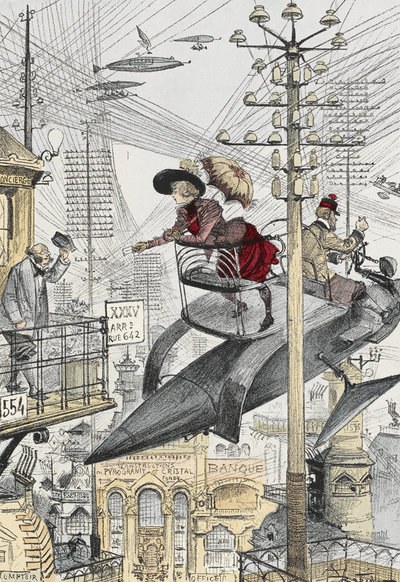

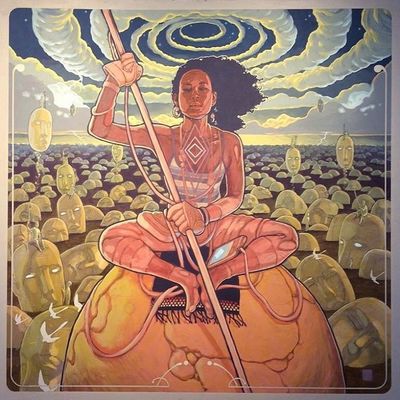
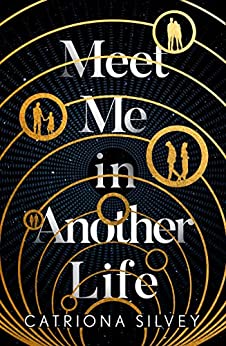
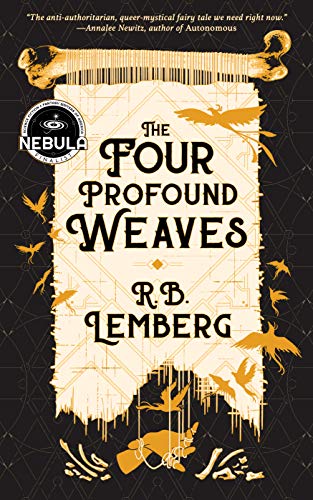
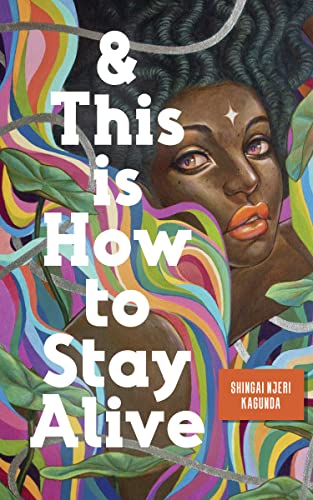

 RSS Feed
RSS Feed
